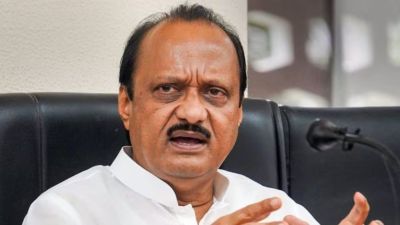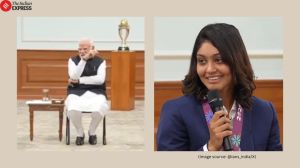How We Voted and Why
A study of the 2004 general elections helps anticipate the big questions about the 2009 verdict
A study of the 2004 general elections helps anticipate the big questions about the 2009 verdict
With due respect to T.S. Eliot,time,if instead of being measured in coffee spoons,was measured in terms of electoral cycles of five years each,the book under review would provide a worthwhile roadmap for assessing crucial political changes in India.
Electoral Politics In Indian States Lok Sabha Elections in 2004 and Beyond looks at the 2004 general election results with interesting details of 16 diverse states (notably,four northeastern states are chosen,which are usually thought too small to reflect the complete Indian reality but Bihar and Tamil Nadu are missing). Other than state-wise analyses,there are three pan-Indian essays,two fresh ones,and one which has already made an appearance at many forums.
The essays,because they cover so much more than just the 2004 polls,are relevant,engaging and of immense help to journalists,social scientists and casual readers in making sense of the electoral process in India especially as there is a lot of reference to past elections. One of these essays in the end looks at state elections between 2004 and 2009 and how a regular political calendar (of elections) has ensured expectations of rotation between competing parties (which may or may not occur) and how each of these elections is seen as a semi-final of sorts for the next big general election.
This last of the three big essays in the book,by Yogendra Yadav and Suhas Palshikar,called Revisiting Third Electoral System is of special interest. Written before the results of 2009,it is prescient in many ways as it witnesses the squeezing of the non-Congress,non-BJP front. But it goes beyond that.
The authors say the greater political inclusiveness that is,all parties have had a say or participation in government in some form or shape has resulted in a unified political establishment. While this may be seen as positive and one giving greater stability to the system,the authors point out that with the disappearance of anti-establishment parties,it has meant that the political establishment occupies a narrower width of the political spectrum of the country. It is pointed out that with respect to economic policy,social justice and national security,there is greater convergence amongst most major political parties,but its a convergence that has not led to deepening of the governance agenda. It has led to a paradox of sorts of stability not necessarily guaranteeing better attention to needs of common Indians.
The book is premised on a crucial assumption: states are the principal arena of political contestation. This may still be largely true given the fact that the state level is like Goldilocks porridge ideally located somewhere between the national and the nagarpalika/panchayat level,and most likely to shape and filter rather than pre-determine national outcomes.
But some dimensions of Elections 2009 will no doubt challenge many of these assumptions. This one had a strong whiff of a national election a silent wave in favour of a certain kind of politics represented by the Congress and its allies and a negation of what might be termed confusing agendas pursued by both the Right and the Left. No doubt all of these sentiments were filtered through the prism of what took place at the constituency level and at the state level,but each of these things came together to give what the electorate thought a coherent political form,perhaps less elusive than what authors thought 2004 was all about.
The essays on Andhra and Karnataka are very relevant,as the forces that got trumped in 2004 met the same fate even this time. Kerala is very interesting,as there is talk of how non-performance and factionalism did the UDF in then. Considering how things got nearly reversed this time just reading into the immediate past can be illuminating. Also interesting are some nuggets like that about the famed floating vote-share in Kerala. Assumed to be wafer-thin,it is actually approximately 13.9 per cent.
The essay on Maharashtra is also useful. The close contest between the NCP-Congress and the Shiv Sena-BJP in 2004,turned into the NCP-Congress getting considerably ahead in 2009. On reading the Maharashtra story of 2004,what becomes crystal clear is the silent role that the local and new force,the MNS played in Maharashtra this time (as it probably did in the case of Andhra Pradesh with Praja Rajyam and in Tamil Nadu with Vijaykanths DMDK).
In the loud chorus championing the bipolarity these elections are meant to have brought about,the authors might wish to consider the role of the silent third forces in at least these three states,should they attempt a sequel or a new body of work to explain Elections 2009.



- 01
- 02
- 03
- 04
- 05




























